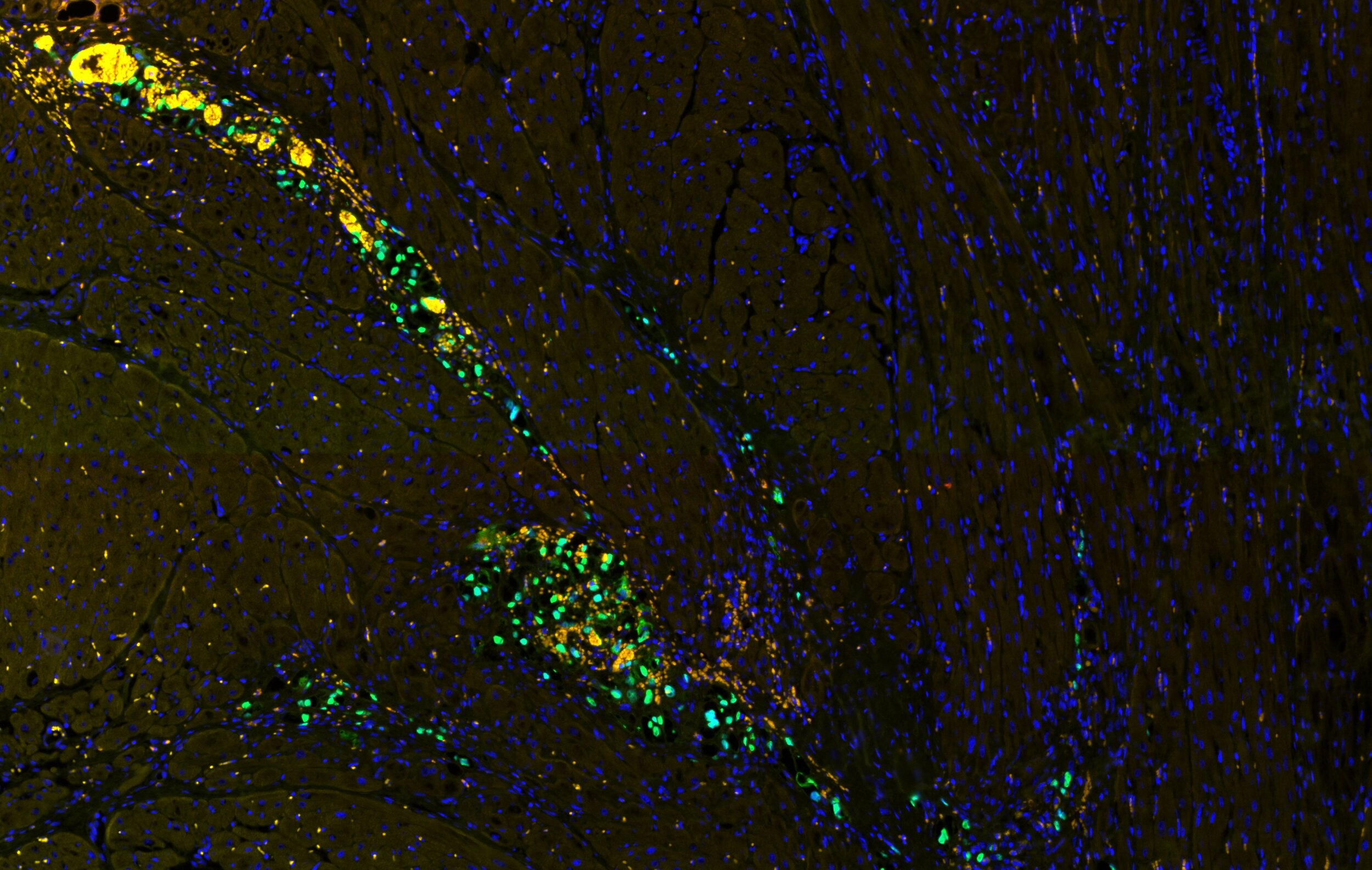
Heart regeneration: a guide for patients
What is cardiovascular disease?
Cardiovascular disease refers to diseases of the heart and blood vessels. Cardiovascular disease is the leading cause of death worldwide, accounting for 31% of all deaths – more than all forms of cancer combined. This is largely because the heart’s ability to regenerate itself after injury is poor, even though modern medicine can diagnose and treat many of the underlying causes of heart injury. Causes of heart injury can include congenital defects chronic hypertension (high blood pressure), or a heart attack.
What is a heart attack?
A heart attack, also known as a myocardial infarction, occurs when blood flow to parts of the heart is blocked. This causes the affected parts of the heart to die if blood flow is not restored within minutes. If blood flow is cut off for long enough, millions of heart muscle cells (called cardiomyocytes) can die.
How does it lead to heart failure?
Unlike other organs in the body, the heart is incapable of significant regeneration after a major injury. Instead, it will attempt to heal itself by forming a scar. However, scar tissue is significantly weaker than the healthy heart tissue it is replacing and gets weaker over time. This diminishes the heart’s ability to pump blood around the body, resulting in a condition called heart failure. In addition, damage to the heart tissue may result in abnormal beating rhythms, called arrhythmias. Some arrhythmias can be fatal and lead to sudden cardiac death.
How do we treat heart failure?
In the clinic, treatment methods for heart failure are limited. Because the damaged heart tissue cannot be regenerated, current treatments focus on slowing the progression of heart failure through the use of drugs. However, a damaged and weakened heart will slowly lead to a downward spiral of heart failure. There will be a point at which the heart cannot pump enough blood to meet the metabolic demands of the body. At this point, the patient will require a heart transplant.
Why is our research important?
Our research is important because it aims to tackle the root cause of heart failure- the loss of heart muscle cells, and weakening of the heart due to scarring. By exploring new avenues for treating heart attacks and heart failure, we can pave the way for much-needed solutions to the growing epidemic of heart failure. This has the potential to save billions of dollars in health care costs and many future lives.
Below is a brief description of some of our projects:
Stem cells for heart failure
One of our primary goals is to regenerate damaged heart tissue. One way to do this is to use a new type of stem cell called a human pluripotent stem cell (hPSC). These cells can be generated from any tissue in the body (such as your skin), then turned into any cell of our choosing. Currently, we are using hPSCs to generate cardiomyocytes, which can then be delivered to the patient’s heart to replace the tissue that was damaged or lost during a heart attack.
New drugs for targeting scar formation
Our research also focuses on gaining a better understanding of the scarring and repair processes that occur after a heart attack. From this, we can develop new drugs that can target these processes and encourage the heart to create stronger, more stable scars that are able to maintain heart function. A potential treatment we are exploring is the use of a protein called platelet-derived growth factor (PDGF).

